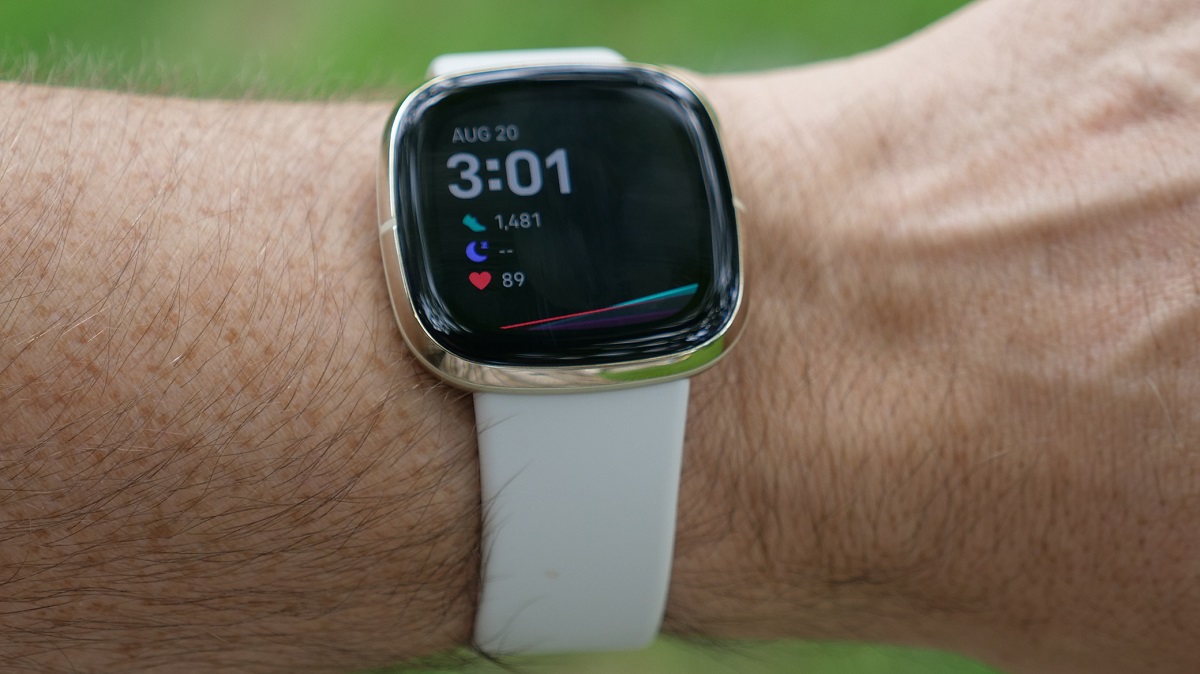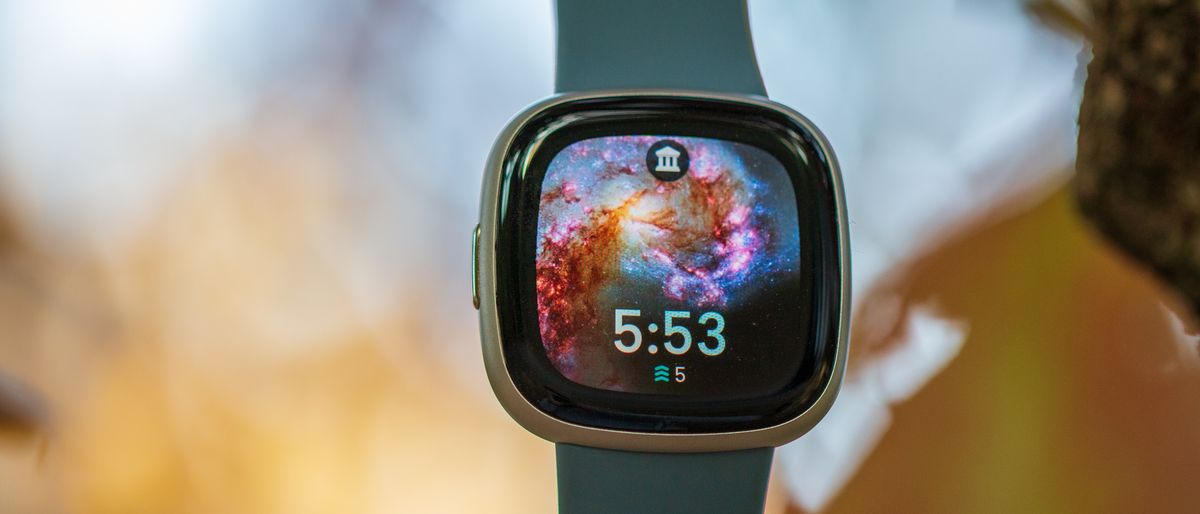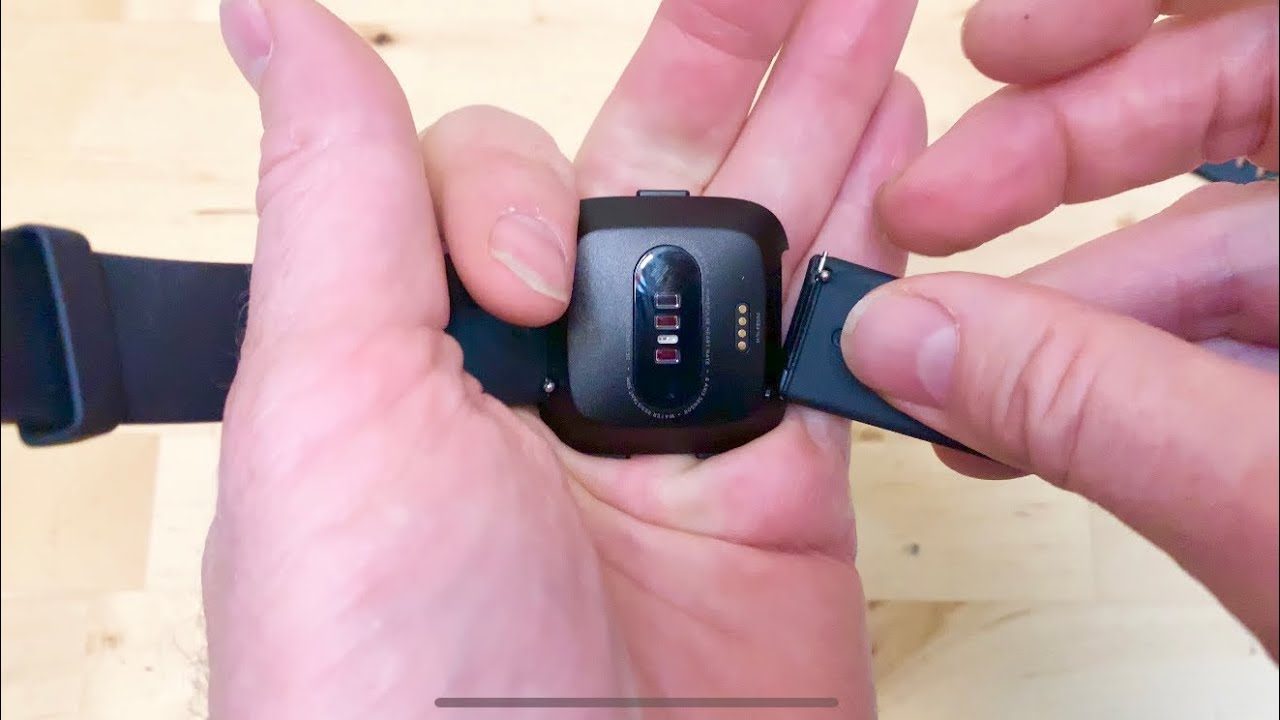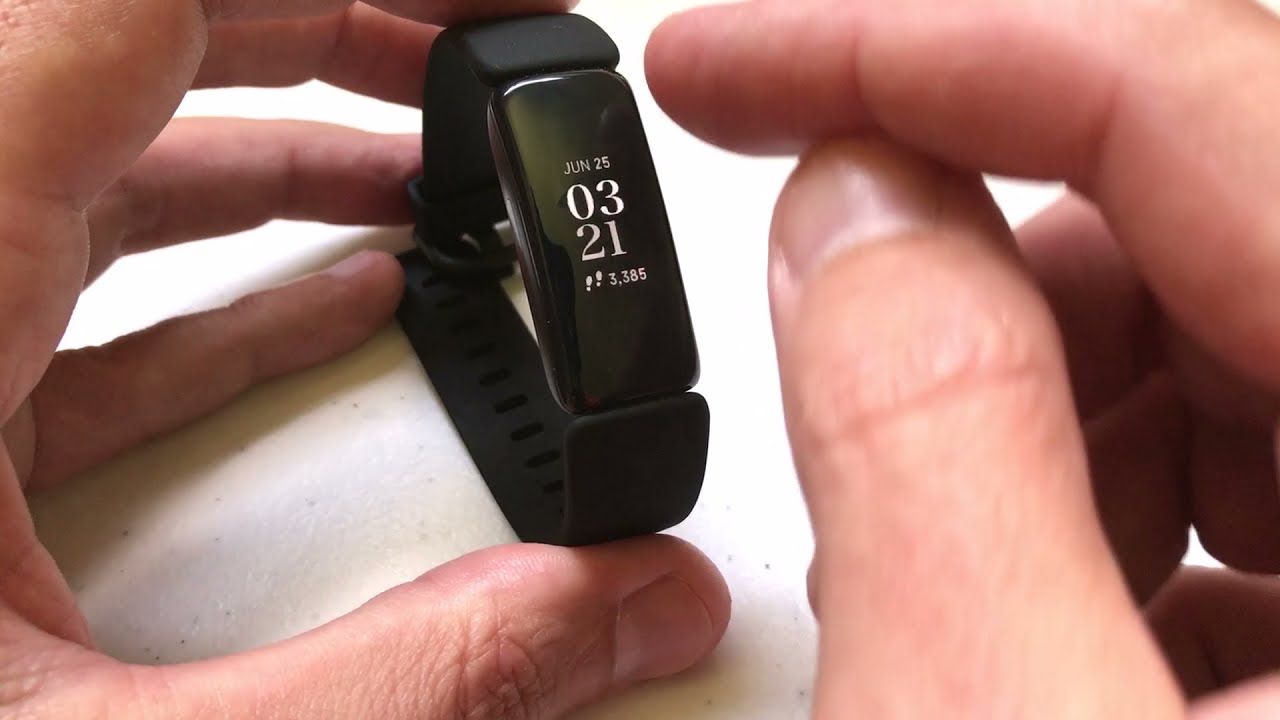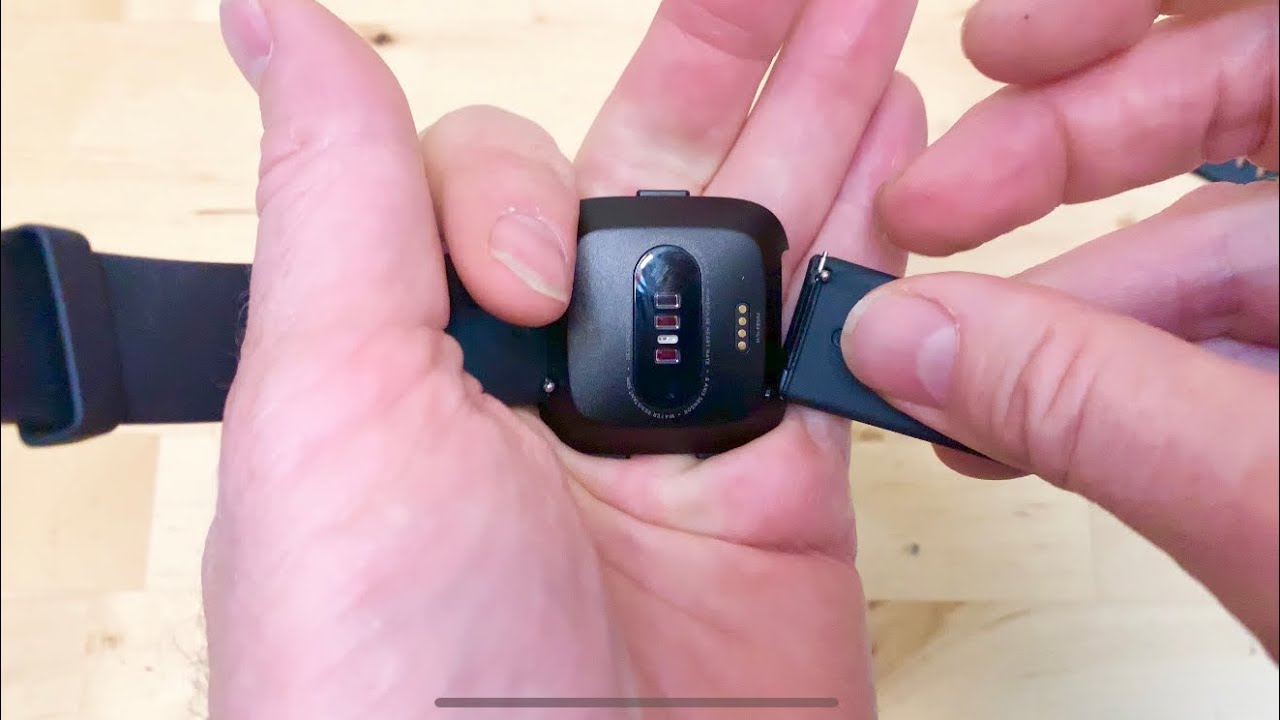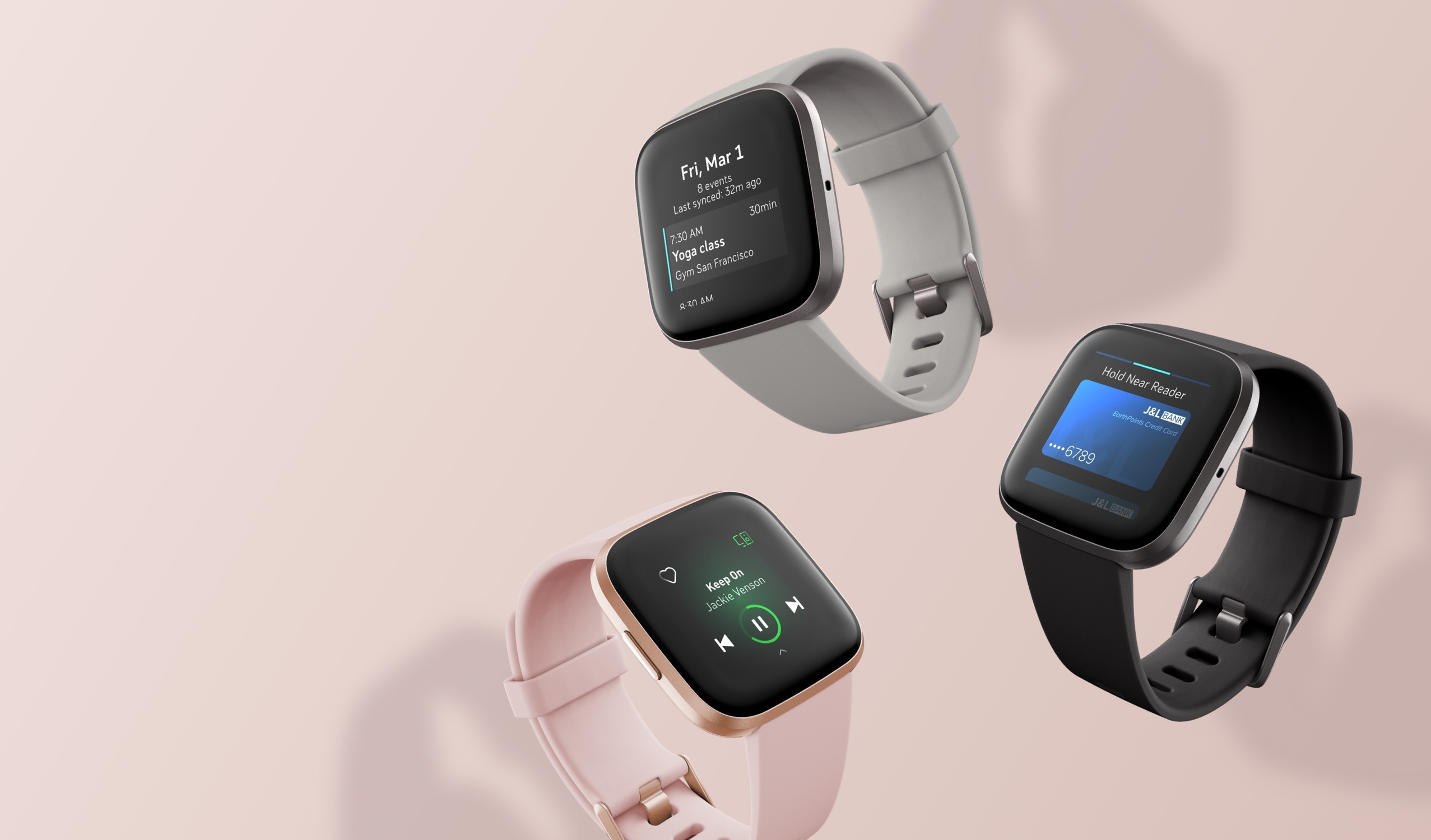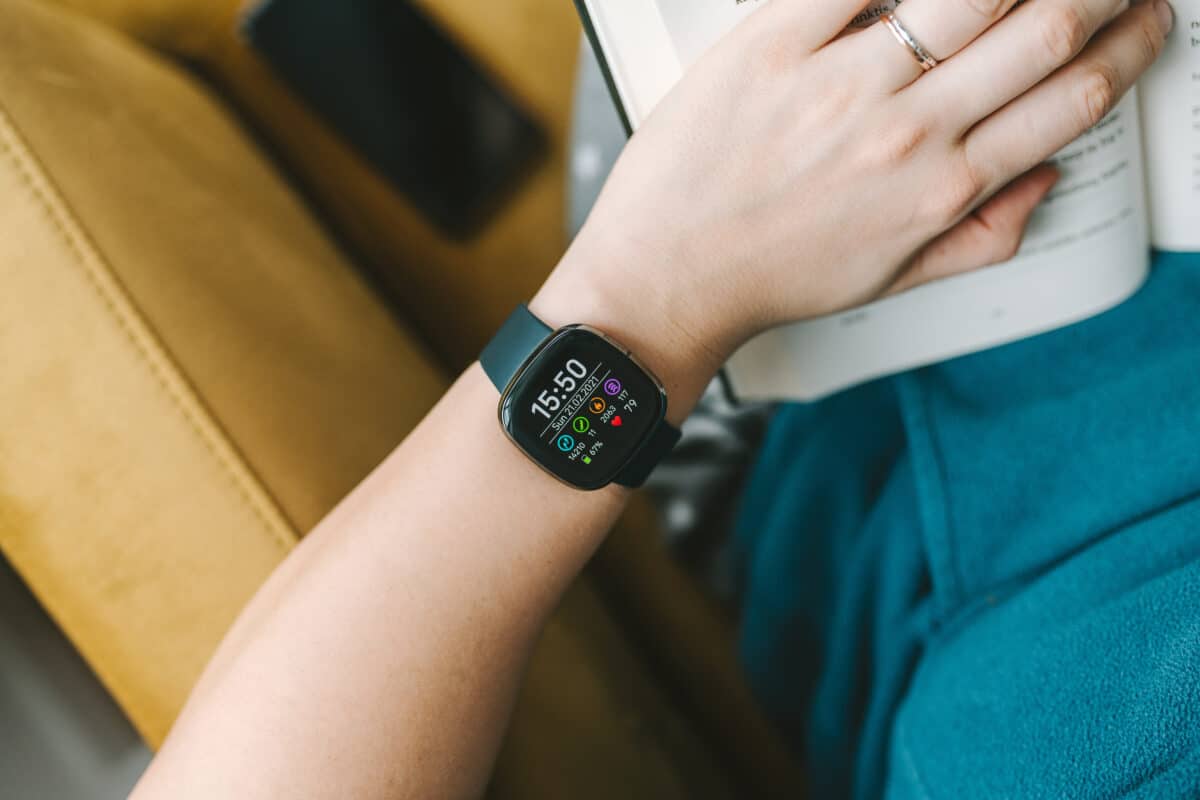Introduction
The Fitbit Sense is not just a smartwatch; it's a personal companion that empowers you to take control of your health and well-being. One of the most exciting features of the Fitbit Sense is its customizable watch faces, which allow you to personalize your device to suit your style and preferences.
The watch face serves as the focal point of interaction with your Fitbit Sense, displaying vital information at a glance, such as the time, date, heart rate, and activity stats. With a myriad of options available, you can choose a watch face that resonates with your personality and complements your lifestyle.
Changing the watch face on your Fitbit Sense is a simple yet impactful way to breathe new life into your device. Whether you're in the mood for a sleek digital display or a more traditional analog look, the Fitbit Sense offers a diverse selection of watch faces to cater to your aesthetic sensibilities.
In this article, we will delve into the intricacies of customizing and changing watch faces on the Fitbit Sense. From understanding the various watch face options to troubleshooting potential issues, we'll guide you through the process, ensuring that you make the most out of this feature-packed wearable.
So, let's embark on a journey to unlock the full potential of your Fitbit Sense by exploring the fascinating world of watch faces and discovering how you can seamlessly integrate them into your daily routine. Get ready to infuse a touch of individuality and flair into your Fitbit Sense as we unravel the art of changing watch faces and harnessing the power of personalization.
Understanding Fitbit Sense Watch Faces
The Fitbit Sense offers a diverse array of watch faces, each designed to cater to different preferences and needs. These watch faces serve as the visual interface of the device, providing users with essential information at a glance. From classic analog designs to modern digital displays, the Fitbit Sense offers a spectrum of options to suit every individual's style and requirements.
Classic Analog Faces
For those who appreciate the timeless elegance of traditional timepieces, Fitbit Sense offers a range of classic analog watch faces. These designs typically feature hour and minute hands, along with customizable complications that display additional data such as heart rate, activity progress, and weather information. The classic analog faces exude sophistication and are well-suited for those who prefer a refined and understated look.
Modern Digital Faces
On the other end of the spectrum, the Fitbit Sense boasts an assortment of modern digital watch faces that embrace contemporary aesthetics. These faces often showcase vibrant, high-resolution displays with customizable widgets for tracking various metrics, such as steps taken, calories burned, and active minutes. The digital faces are ideal for individuals who prioritize dynamic visuals and seamless access to real-time data.
Specialized Health-Focused Faces
In line with its focus on health and wellness, the Fitbit Sense also offers specialized watch faces that prioritize fitness and well-being. These faces prominently feature health metrics, including heart rate, SpO2 levels, and stress management data, providing users with immediate insights into their overall health status. With these specialized faces, users can effortlessly monitor their vital health statistics throughout the day, fostering a proactive approach to well-being.
Personalization Options
Beyond the pre-installed watch faces, Fitbit Sense users have the option to personalize their devices further through customizable complications, color themes, and layout arrangements. This level of personalization empowers users to tailor their watch faces to align with their individual preferences, ensuring that the device seamlessly integrates into their daily lives.
Understanding the diverse range of watch faces available for the Fitbit Sense sets the stage for a deeper exploration of how to change and customize these visual elements to suit individual tastes and needs. With this foundational knowledge, users can embark on a journey of personalization, leveraging the full potential of their Fitbit Sense to enhance both functionality and style.
How to Change Watch Faces on Fitbit Sense
Changing the watch face on your Fitbit Sense is a seamless process that allows you to infuse your device with a fresh look to suit your mood, style, or activity. Here's a step-by-step guide to effortlessly switch between watch faces and explore the diverse visual options available:
-
Accessing the Watch Face Gallery: To begin the process, navigate to the Fitbit app on your smartphone, the central hub for managing your Fitbit Sense. From the app's dashboard, tap on the device icon representing your Fitbit Sense to access its settings and features. Select "Clock Faces" to enter the watch face gallery, where a plethora of options awaits.
-
Exploring the Selection: Within the watch face gallery, you'll find a wide array of designs, ranging from classic analog faces to modern digital displays. Take your time to browse through the available options, considering the layout, color schemes, and data metrics displayed on each face. This exploration phase allows you to identify the watch faces that resonate with your personal style and requirements.
-
Selecting a New Face: Once you've identified a watch face that captivates your interest, tap on it to select and preview how it will appear on your Fitbit Sense. This preview functionality enables you to visualize the chosen watch face in action, providing a glimpse of how it will look on your device's display.
-
Syncing the New Face: After finalizing your selection, tap the "Select" or "Install" button to initiate the syncing process. This action transfers the chosen watch face from the Fitbit app to your Fitbit Sense, seamlessly integrating the new visual interface onto your device.
-
Personalizing the Face (Optional): Upon syncing the new watch face, you may have the option to further personalize it by adjusting complications, color themes, or layout settings. This level of customization allows you to tailor the watch face to your specific preferences, ensuring that it aligns perfectly with your lifestyle and visual preferences.
By following these straightforward steps, you can effortlessly change the watch face on your Fitbit Sense, infusing it with a fresh visual identity that resonates with your individuality and enhances the overall user experience. The ability to seamlessly switch between watch faces empowers you to adapt your Fitbit Sense to different occasions, activities, and moods, ensuring that your device remains as dynamic and versatile as you are.
Customizing Watch Faces
Customizing watch faces on the Fitbit Sense elevates the personalization experience, allowing users to tailor the visual interface to align seamlessly with their individual preferences and lifestyle. This level of customization extends beyond mere aesthetics, as it empowers users to curate a watch face that not only reflects their style but also provides quick access to the most relevant and essential information.
Upon selecting a watch face from the Fitbit gallery and syncing it to the device, users often have the option to further personalize the chosen face. This customization process typically encompasses several key aspects, enabling users to fine-tune the watch face to their liking.
Complications
One of the primary components available for customization is the inclusion and arrangement of complications. Complications are additional widgets or modules that display specific data, such as heart rate, step count, weather information, or even custom shortcuts to frequently used apps. Users can choose which complications to display on their watch face and arrange them according to their priority, ensuring that the most pertinent information is readily accessible at a glance.
Color Themes
Many watch faces offer customizable color themes, allowing users to harmonize the visual aesthetics with their personal preferences or outfit choices. Whether it's a vibrant and energetic color scheme for an active day outdoors or a more subdued and elegant palette for a formal occasion, the ability to adjust color themes empowers users to tailor the watch face to suit the context and their mood.
Layout Arrangements
Some watch faces provide flexibility in terms of layout arrangements, enabling users to reposition and resize elements according to their preferences. This feature allows for a personalized visual hierarchy, ensuring that the most critical information occupies prominent positions on the display, enhancing readability and usability.
Additional Settings
Depending on the specific watch face, users may encounter additional settings that offer further customization options. These settings could include the ability to toggle specific data metrics, adjust display preferences, or even incorporate personal touches such as custom backgrounds or artwork.
By leveraging these customization options, users can transform their Fitbit Sense into a truly personalized wearable companion that seamlessly integrates into their daily routines. The ability to tailor the watch face to align with individual preferences and requirements enhances the overall user experience, fostering a deeper sense of ownership and connection with the device.
Customizing watch faces on the Fitbit Sense is not merely a superficial exercise in aesthetics; it's a powerful tool for users to curate a visual interface that encapsulates their unique style, preferences, and practical needs. This level of personalization underscores the adaptability and versatility of the Fitbit Sense, ensuring that the device remains as dynamic and individual as its users.
Troubleshooting Watch Face Issues
While the process of changing and customizing watch faces on the Fitbit Sense is designed to be seamless and intuitive, users may encounter occasional issues that affect the display or functionality of their chosen watch face. Understanding how to troubleshoot these issues empowers users to swiftly address any anomalies and ensure that their Fitbit Sense continues to deliver a seamless and personalized experience.
Common Watch Face Issues
Display Glitches
At times, users may experience display glitches, such as elements of the watch face not rendering properly or appearing distorted. These issues can detract from the overall user experience and may stem from software inconsistencies or temporary system hiccups.
Complications Not Updating
Complications are designed to provide real-time data and information, but users may encounter instances where complications fail to update or display outdated information. This issue can hinder the utility of the watch face, especially when quick access to accurate data is essential.
Syncing Problems
Occasionally, users may encounter difficulties when syncing new watch faces or customizations from the Fitbit app to their Fitbit Sense. This can result in discrepancies between the selected watch face in the app and the actual display on the device.
Troubleshooting Steps
Restarting the Device
A simple yet effective troubleshooting step involves restarting the Fitbit Sense. This action can help clear temporary system glitches and restore the device to a stable state, potentially resolving display and syncing issues.
Updating the Firmware
Ensuring that the Fitbit Sense is running the latest firmware version is crucial for addressing software-related issues. Firmware updates often include bug fixes and optimizations that can rectify display glitches and improve the overall performance of the device.
Resetting the Watch Face
In cases where specific watch face elements are not functioning as intended, users can attempt to reset the watch face to its default settings. This action can help resolve complications not updating and restore the watch face to its original state.
Reinstalling the Watch Face
If syncing problems persist, users can consider reinstalling the problematic watch face. By removing the watch face from the device and reinstalling it from the Fitbit app, users can potentially resolve discrepancies and ensure that the selected watch face is accurately reflected on the Fitbit Sense.
By following these troubleshooting steps, users can effectively address common watch face issues and maintain a seamless and personalized experience with their Fitbit Sense. Leveraging these strategies empowers users to swiftly overcome any obstacles that may arise, ensuring that the visual interface of the device remains vibrant, functional, and tailored to their individual preferences.
Conclusion
In conclusion, the ability to change and customize watch faces on the Fitbit Sense represents a pivotal aspect of the wearable's user experience. The diverse array of watch face options, ranging from classic analog designs to modern digital displays, empowers users to infuse their devices with a touch of individuality while ensuring that essential information is readily accessible at a glance. By seamlessly switching between watch faces and personalizing them to align with specific preferences, users can curate a visual interface that harmonizes with their unique style and practical needs.
The process of changing watch faces on the Fitbit Sense, as outlined in this article, underscores the seamless integration between the Fitbit app and the device itself. Navigating the watch face gallery, exploring the selection, and syncing new faces are intuitive steps that enable users to effortlessly refresh the visual identity of their Fitbit Sense. Furthermore, the ability to customize complications, color themes, and layout arrangements elevates the personalization experience, ensuring that the watch face not only reflects individual style but also provides quick access to pertinent information.
As with any technological device, occasional issues with watch faces may arise, but understanding how to troubleshoot these issues empowers users to maintain a seamless and personalized experience. By following the recommended troubleshooting steps, users can swiftly address display glitches, complications not updating, and syncing problems, ensuring that their Fitbit Sense continues to deliver a vibrant and functional visual interface.
Ultimately, the process of changing and customizing watch faces on the Fitbit Sense transcends mere aesthetics; it encapsulates the essence of personalization, adaptability, and user empowerment. The wearable becomes an extension of the user's personality and preferences, seamlessly integrating into their daily routines and enhancing their overall experience. Whether it's embracing the timeless elegance of a classic analog face or harnessing the dynamic capabilities of a modern digital display, the Fitbit Sense watch faces cater to diverse tastes and lifestyles, ensuring that each user can find a visual identity that resonates with them on a profound level.
In essence, the art of changing watch faces on the Fitbit Sense is a journey of self-expression and practicality, where users can seamlessly blend style with functionality, all within the confines of a wrist-worn companion that is as dynamic and individual as they are.







